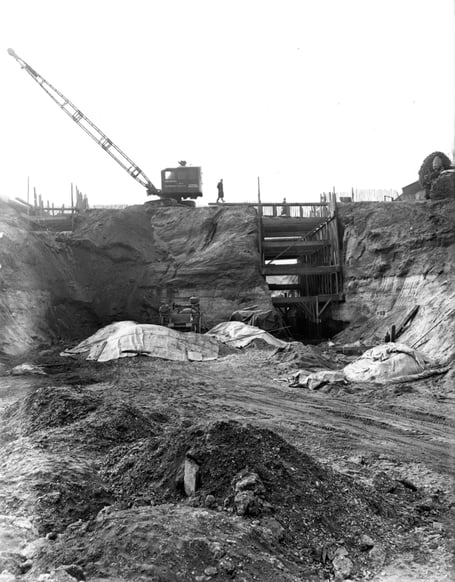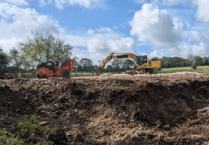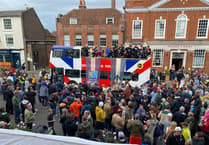Today, traffic through Farnham causes a lot of controversy with various, often opposing views about how to solve the problem.
However, over the years this isn’t the first occasion when the town has experienced traffic jams and there have been various solutions which have worked for a time until the volume of vehicles once again grew too big.
The biggest bottleneck has always been traffic travelling between east and west which traditionally passed through the town centre.
Before the Second World War work started on a bypass road linking Coxbridge and the Shepherd and Flock roundabouts but the years of conflict rather got in the way of the works and the section between Weydon Lane and Station Hill could not be completed.
As a result, until the late 1950s traffic continued on its journey by using Red Lion Lane, Bridge Square and Abbey Street – a somewhat tortuous route.
Imagine if that was the route now with current traffic volumes.
So it was that in 1955 work started to dig a cutting past Firgrove Hill with a new concrete bridge to carry the A287 into the town over the through traffic passing below.
This image from the Herald archive shows work in progress on the new bridge, I think looking from the Station Hill side of the cutting below.
Taken on February 17, 1956, half the bridge length appears to have been completed with the excavator starting work on the southern half.
Before the bridge a “spit” of sandstone carrying the roadway of Firgrove Hill extended across the cutting which had been left when the sand had been quarried out on either side pre-war.
Sand for building was very big business in early 20th-century Farnham with much of the south side of the town being dug over with a multitude of pits to win the valuable material.
The bridge was completed in 1957 but soon proved inadequate for the amount of traffic passing through.
The Herald Digital Archive Project is on the lookout for willing volunteers to fill two new roles on its steering group; one to drive fundraising for the project and another to help with community engagement. To find out more, please email [email protected]





Comments
This article has no comments yet. Be the first to leave a comment.